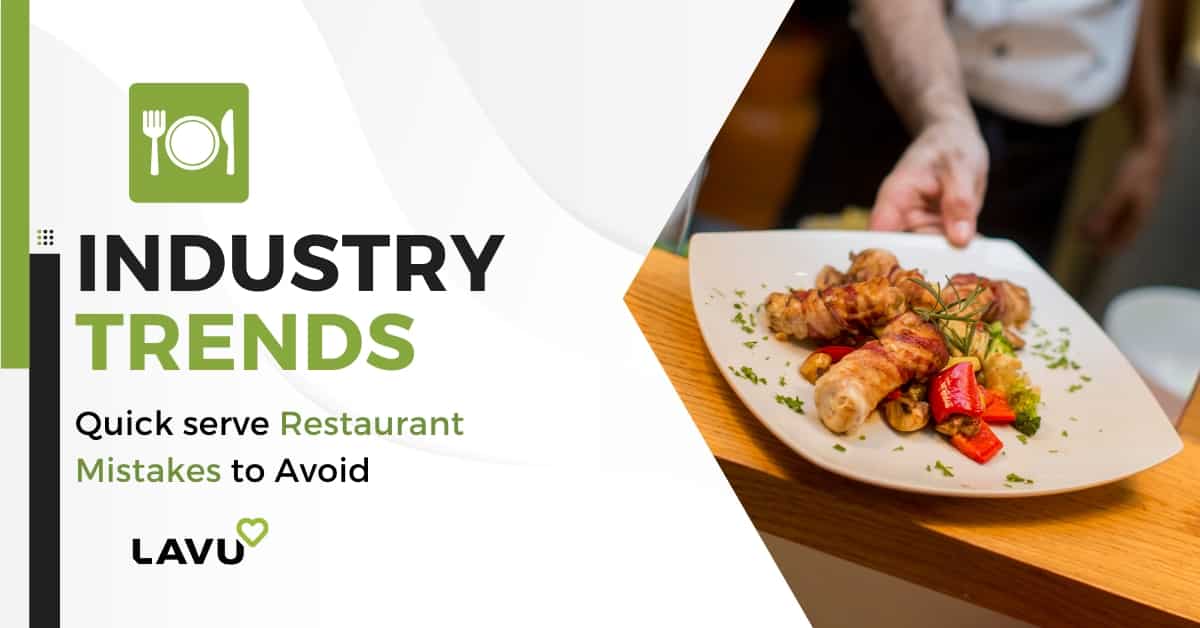
While the end-product of a quick-serve restaurant is to provide fast food to hungry customers, there are common mistakes in the industry. There is a lot of competition and it is certain to win if your branding, POS system, or customer service is lacking in any way. While all restaurateurs will tell you that location is crucial to business success, it is not the only critical aspect to consider. Here is a look at some of the potential rotten eggs easy to spot in quick-serve restaurants.
Lack of Branding and Restaurant Character
Today’s quick-serve restaurants are very different from traditional fast food models that include burgers, fries, and subs. It is important to offer flavorful and quality items, a great ambiance, and a unique character. Unique isn’t necessarily about quirky or weirdness (except when appropriate), it is about showing your character and that of the customers you serve.
Overall, your brand must show a theme and be consistent. For example, say you have a remodeled old-fashioned service station as a quick-serve sandwich bistro. You may want to work from a 1950s or 1960s theme focused on service station memorabilia throughout. The same theme must be on your website, social media, or other platforms used.
A secondary piece of branding includes your menu. Whether on a simple laminated sheet or on a digital board, follow these great digital menu tips: properly sized screen, location of menu, clean and easily understood content, and simple allergenic indicators.
An Outdated and Inflexible POS
Of all the items your restaurant requires, a modern, flexible point-of-sale system (POS) is critical. Long gone are the days of an old-fashioned ‘till’. Great examples of best practices and use of flexible POS systems are Starbucks, McDonald’s, MOD Pizza, and Domino’s Pizza. These icons in fast food are for the masses, so carefully decide which options are best for your business’s bottom line.
Along with consistent branding, customers can order online, through an app, some options include being able to order hours ahead of time. Use the blog search option above to read more about the great benefits of using a tablet-based POS or read this quick-service case study.
Less Than Exceptional Customer Service
One critical aspect in quick-service restaurants beyond the quality of food is providing excellent customer service. Friendly and personable employees make all the difference and are most effective at representing your brand. Customers should feel welcome before, during, and after a purchase, regardless if from the brick & mortar site, website, or app.
Managing customer experience isn’t about being nitpicky and exhausting your resources chasing perfection in everything; it’s about focusing your resources on the details that have a lot of impact. Train employees regularly and consistently that a simple smile and authenticity go a long way. Even the smallest things help make a difference. If a mistake occurs, have a plan in place to remedy the issue quickly and generously.
Encourage employees to engage customers and bring some fun to quick service. Consider how Chick-fil-A aims to provide a service level you’d expect to receive at finer establishments. Employees roam the dining room offering to refill guests’ drinks and help carry-out guests to their cars. Another example, at every MOD Pizza, staff greet and give an adieu of thanks when they leave. Be sure whatever piece of fun you incorporate is integrated well enough to be second nature for staff.
Price Points and Meal Deals
Your competition and supply vendors will be the driving force to initially establish price points. Don’t stop there! Take pricing to the next level by objectively determining simple pricing to yield higher results that will stand the test of time. Since quick service fare has price points of approximately $5 to $9 per meal, it is critical to provide meal deals that make sense and still make money. As stated by Restaurant Engine, “To make money you want to bundle your high-margin items with a limited amount of expensive items such as meats, seafood and out of season fruits and vegetables.”
Consider variations of meal deals not offered by your competition. Keep options simple and include a bottle of water as a lower-cost alternative to soda. Perhaps your meal deals include a cookie or treat that is not otherwise available. Another common practice is to have meal deals for specific days (which can play on your restaurant’s brand and sense of fun).
If competitors have happy hour or daily specials, create your own for times that are natural lows in business. Happy hours should include ‘group deals’ for drinks and tapas as well as opportunities like “game day” specials. Ideas like that are a big win for your quick-serve restaurant since people want options affordable and quick (even if they still need to pick it up).
Ignoring Trends and New Best Practices
As the world continues to change and technology remains ever-changing, remember to keep abreast of the restaurant world’s trends and best practices. For example, many fast-casual restaurants are now becoming the norm in quick-serve restaurants as an option with new delivery services like UberEats.
Another common trend is the loyalty app. Many big box fast food services already have these in place, and they are popular! From ordering remotely for pickup on the way home (along with cell phone order parking spaces) to opportunities for rewards and savings, a loyalty app is a norm and favored.
By far, the more customer-focused and authentic your quick-serve restaurant is, the more likely you will succeed. In further considering all the headlines above, be open to new opportunities and how growing trends can be incorporated. It is always better to be ahead of the game than to lose business and then struggle to regain traction.

